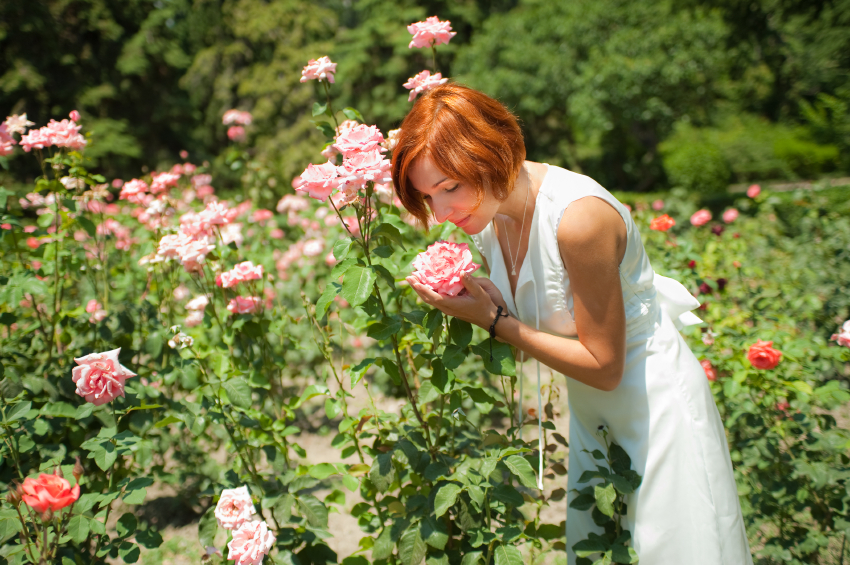Three years ago I tossed out all my hybrid tea roses in disgust at the amount of chemicals required to keep them in an existent state. After reading about the Empress Joséphine’s fabled rose garden at Malmaison, I embarked upon a torrid love affair with sustainable roses, a love affair that has not diminished one iota to the present day. By sustainable roses, I mean those roses that can exist in my garden with only a modicum of pampering. During this past long, hot summer, I even — in a fit of dementia — managed to order 22 new roses to plant in my garden that long ago ran out of available space.
Now all rose experts will tell you the same thing: “Roses are heavy feeders.” Translated, this means that roses require fertilizer and lots of it. However, fertilizer is rapidly becoming a controversial word in the world of gardening. Phosphate and potassium reserves are running low, coupled with the disconcerting news that there is no substitute for them. Potentially down the road this could be a catastrophe for the world’s agricultural production — and I have no desire to take food out of the mouths of hungry babies.
Because heavy rain water picks up the fertilizer we distribute in our gardens and deposits it in our bodies of water with disastrous results, here in the South we have begun to install rain gardens in an attempt to contain the water on our property. However, our rain gardens are few in number, so the obvious question remains: What is a rose gardener to do if she’s in the midst of a rose mania but wants to preserve both the environment and the world’s agricultural resources?
With this mighty question hanging over my shoulder, I attended a lecture on the benefits of microrrhizal fungi at the Sarah P. Duke Gardens. Now, I have a confession to make: I tend to categorize the few fungi I’m intimately acquainted with into several categories: Diplocarpon rosae responsible for black spot (bad), mushrooms (some good, some bad), and truffles (excellent — if you are rich). This was my total knowledge of fungi, categorizing me as a fungi-ignorant gardener.
My first problem with microrrhizae was learning how to pronounce it, and it took a good two weeks before it cascaded forth comfortably in my conversation. Yes, that’s right: after one lecture I became a microrrhizae zealot.
You see, microrrhizae and roses love one another. The two develop a symbiotic relationship whereby the rose roots supply the carbohydrates the fungi require while the fungi spread out into the soil, far further than the rose roots can reach, to send back the water and nutrients that the rose needs. For the rose lover, microrrhizae belong in the same category as truffles (excellent), only unlike truffles they are affordable.
However, there is a big but in this tale: fertilizer destroys microrrhizae — especially destructive are the foliar fertilizer sprays. The upside of foliar sprays is that they provide fertilizer quickly to roses; the downside is that they destroy the microrrhizae. Once you start using foliar sprays on your roses you will have to continue their use throughout the growing season because you will have no microrrhizae to provide the roses with nutrition. And isn’t the point of sustainable rose gardening to grow roses using a minimum amount of chemicals? If you have to fertilize, a small dose of a slow-release fertilizer is not as destructive as the foliar sprays.
So we are left with the basic issue concerning growing sustainable roses: To fertilize or not to fertilize, that is the question. (Sorry, I couldn’t resist.) My response is that we should feed our soil first. Every year I spread compost over the whole garden, adding a layer of pine bark mulch. The best thing you can do for your soil is to supply a yearly application of an organic mulch over it.
The second thing required is to get a soil test. Probably you’ll need some nitrogen because this element moves quickly through the soil, but phosphorous and potassium are sluggish movers and you might not need any to bring your soil up to par. Again, for the sake of preserving microrrhizae in the soil, select a slow-release application and apply it with a light hand.
The third thing you should do is to purchase some microrrhizal fungi. By googling “microrrhizae” you will be able to find an online source. Generally the amount called for is one-quarter teaspoon per rose bush. Most plants will benefit from this fungi, and, unlike truffles, microrrhizae are not expensive.
The best thing is that once you have learned how to pronounce “microrrhizal fungi,” you will have joined a select group of gardeners.









